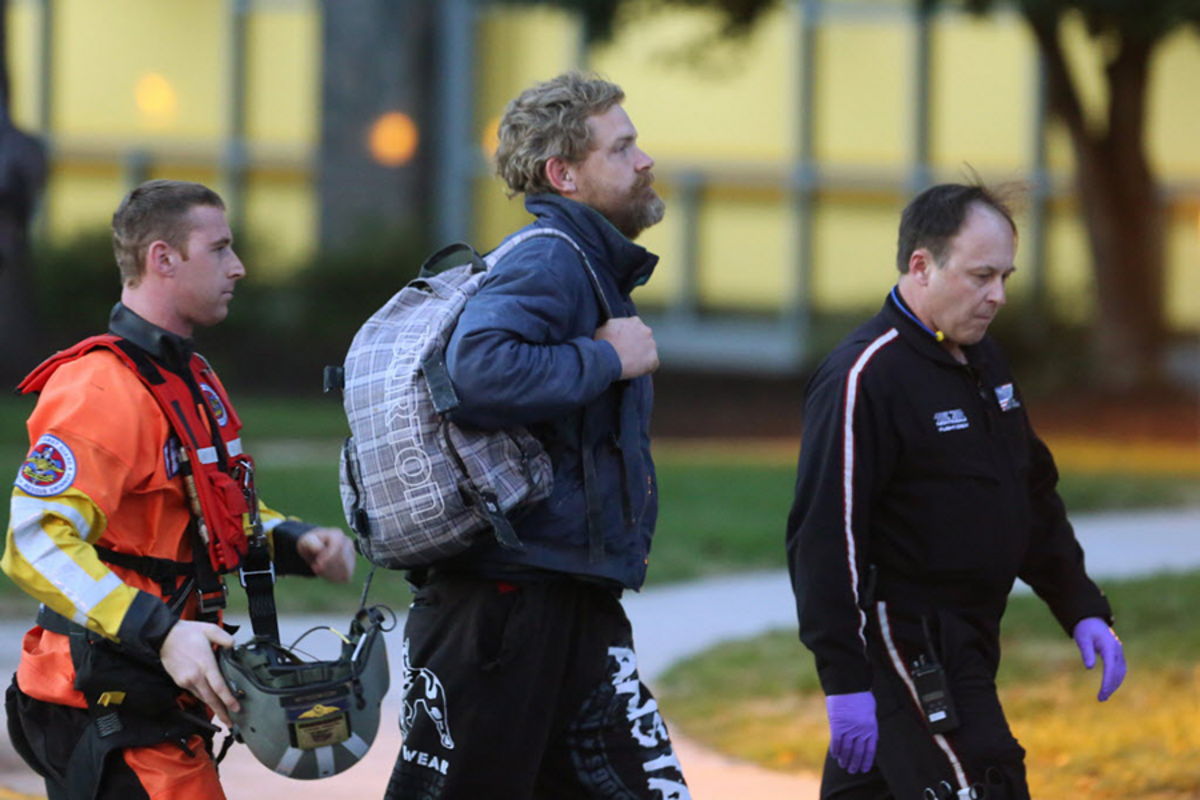Sailor who survived 66 days at sea: How ordeal could have been prevented
Loading...
Flares, a cell phone, and a VHF radio couldn’t spare Louis Jordan the harrowing 66 days he spent lost at sea aboard his dismasted wooden sailboat, some 200 miles off the shores of North Carolina. The US Coast Guard has advice for other boaters about equipment and planning that could help prevent similar future disasters.
Mr. Jordan disappeared after leaving for a fishing trip on January 29, and wasn't seen again until the German-flagged cargo ship spotted him drifting off the coast, aboard his disabled 35-foot 1965 fiberglass sloop, “Angel,” and took him aboard.
The United States Coast Guard 5th District Command Center in Portsmouth, North Carolina, was notified at 1:30 p.m. Thursday.
A Coast Guard crew, launched from Air Station Elizabeth City, North Carolina, met the Houston Express, hoisted the man and transported him to Sentara Norfolk General Hospital in Norfolk, Virginia, arriving at approximately 7:30 p.m., according to USCG Public Affairs Officer Lt. Krystyn Pecora in an interview.
While initial reports painted a picture of Jordan having survived atop the hull of the overturned vessel, in frigid waters, Pecora said after the sailboat flipped over and dismasted, it then righted and the sailor was able to live inside the protected cabin.
“Had there been a vessel-mounted hydrostatically activated EPIRB on board, it would have immediately initiated the [Search And Rescue satellite] system when the boat was knocked down. We would have received a report within minutes,” says USCG Cmdr. Tim Eason in an interview.
“I'm not saying he wasn't safety conscious. He did have safety gear on board, but the VHF antenna snapped when the boat rolled over. The cell phone didn't work and the flares were never seen. If he’d filed a float plan and had an EPIRB on board it could have dramatically lessened the ordeal," Commander Eason added.
An Emergency Position Indicating Radio Beacon, or , is used to alert search and rescue services by transmitting a coded message on the 406 MHz distress frequency via satellite and earth stations to the nearest rescue co-ordination center. These devices can be affixed to the vessel or handheld.
Commander Eason says most sailors in the MId-Atlantic region carry an EPIRB aboard at all times. “I recommend an EPIRB with an embedded GPS for best results so we don’t have to take the valuable time to triangulate positions. It may seem like overkill, but what I do on my boat is have one mounted on the vessel and one hand held that I can activate.”
The USCG offers a “Take me fishing” boating safety which includes information on free vessel safety checks that can be requested by boaters.
For those venturing out on sail, power, or even kayaks with or without a locator beacon or other tracking communication device, the USCG recommends filing a “” containing all the information rescuers would need to locate you in an emergency, including where the boater planned to be and at what approximate times. Included with the downloadable form is a checklist for worried loved ones for what to do when the boater goes missing.
In the absence of a float plan or tracking beacon, Jordan’s family, friends, and potential rescuers had only one plan on which to fall back, said Jeff Weeks, manager at the in Conway, South Carolina, where Mr. Jordan occasionally worked and kept his sailboat, “All anyone could do was pray. I know his family was praying and we were praying," Mr. Weeks told the Monitor.
“Every day, day-after-day, it was the situation of waiting and hoping to see that mast glide back into the slip here [...] I don’t know if he had any electronics at all on the boat. I doubt it. Not everyone does.”
Weeks added, “Not long after he left, there was a bad nor’easter hit here and it probably had about 20 to 25 foot swells that could have easily overturned that boat. To be honest, in my mind, it seemed very unlikely we would ever see him alive again.”
In after the rescue he says, “I couldn’t fix it. I couldn’t sail my boat back. I’m so sorry. It’s such a big loss.”
His father responds in the recording, “Hey son you’re alright, son, I’m so glad you’re alive. We prayed and prayed and we hoped that you were still alive. So, that’s all that matters.”
“Frankly, here on Holy Thursday, with a boat named ‘Angel,’ we couldn’t ask for a better outcome,” Commander Eason told the Monitor. “The message for boaters to take away from this is that hands-down, an EPIRB takes the ‘search’ out of ‘search and rescue.”
[Editor's note: The original story incorrectly identified the material used to build the Alberg sloop, based on the owner's comments and US Coast Guard information.]





